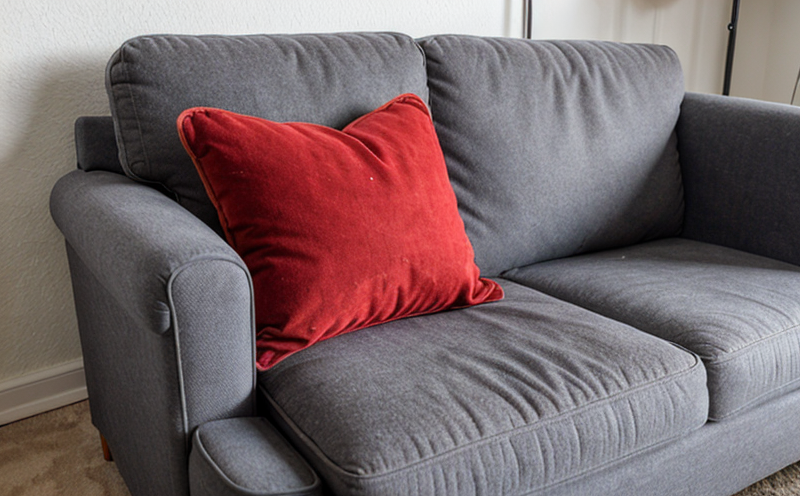ASTM D3776 Mass per Unit Area Testing of Upholstery Fabrics
The ASTM D3776 test method is a crucial standard used in the upholstery and furniture testing sector to measure the mass per unit area (m/㎡) of upholstery fabrics. This measurement provides essential information on the fabric's density, which is vital for quality control, design specifications, and compliance with industry standards.
Mass per unit area is a fundamental characteristic that affects the durability, comfort, and appearance of upholstered products. It influences how the material handles stress and wear over time, making it critical in ensuring the longevity of furniture items such as sofas, chairs, and mattresses.
The test procedure outlined by ASTM D3776 involves measuring the weight of a known area of fabric to determine its mass per unit area. The specimen is cut into a specific size (typically 100 mm x 250 mm) and then weighed precisely after drying at a specified temperature and humidity level.
This test method is widely used by furniture manufacturers, interior designers, and quality control departments to ensure that the fabrics they select meet the required specifications. By adhering to this standard, businesses can enhance their products' performance and durability while maintaining compliance with industry regulations.
The precision of ASTM D3776 testing ensures that upholstered items are consistently manufactured according to design requirements. This is particularly important in sectors where aesthetics and comfort are paramount, such as high-end furniture manufacturing or luxury interior design firms.
In addition to quality assurance, the mass per unit area test also aids in selecting fabrics that meet environmental standards. Fabric with an optimal mass per unit area can contribute positively to a product's overall sustainability by improving its breathability and reducing weight without compromising durability.
ASTM D3776 testing is essential for quality managers, compliance officers, R&D engineers, and procurement teams working in the furniture industry. It provides them with critical data that helps in making informed decisions about fabric selection and manufacturing processes.
Industry Applications
- Furniture manufacturers ensuring consistent product quality.
- Interior designers selecting fabrics for client projects based on mass per unit area specifications.
- Quality control teams verifying the compliance of upholstered products with industry standards.
- R&D engineers developing new upholstery materials and processes.
Eurolab Advantages
At Eurolab, we offer comprehensive ASTM D3776 testing services tailored to the needs of the furniture industry. Our state-of-the-art laboratory facilities and experienced technical staff ensure accurate and reliable results that meet international standards.
We provide detailed reports with clear recommendations for improving fabric performance or selecting new materials based on test outcomes. This service is invaluable for manufacturers looking to enhance product durability while adhering to environmental sustainability goals.
Our commitment to excellence extends beyond just testing; we also offer consultation services to help clients understand the implications of their mass per unit area measurements and how these relate to broader quality assurance strategies.
Environmental and Sustainability Contributions
The ASTM D3776 test method plays a significant role in promoting environmental sustainability within the furniture industry. By ensuring that fabrics meet specified mass per unit area standards, manufacturers can create products that are not only durable but also lightweight, thus reducing material usage and energy consumption during production.
Optimizing fabric density through ASTM D3776 testing helps minimize waste and improve resource efficiency. This approach supports the broader sustainability goals of the furniture sector by contributing to reduced carbon footprints and more sustainable manufacturing practices.
In addition, the test method aids in selecting eco-friendly materials that contribute positively to the overall environmental impact of upholstered products. By ensuring compliance with international standards like ASTM D3776, manufacturers can demonstrate their commitment to sustainability and attract environmentally conscious consumers.





